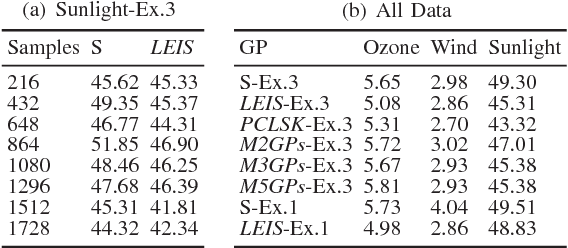Adaptive Sensing for Learning Nonstationary Environment Models
Paper and Code
Apr 26, 2018


Most environmental phenomena, such as wind profiles, ozone concentration and sunlight distribution under a forest canopy, exhibit nonstationary dynamics i.e. phenomenon variation change depending on the location and time of occurrence. Non-stationary dynamics pose both theoretical and practical challenges to statistical machine learning algorithms aiming to accurately capture the complexities governing the evolution of such processes. In this paper, we address the sampling aspects of the problem of learning nonstationary spatio-temporal models, and propose an efficient yet simple algorithm - LISAL. The core idea in LISAL is to learn two models using Gaussian processes (GPs) wherein the first is a nonstationary GP directly modeling the phenomenon. The second model uses a stationary GP representing a latent space corresponding to changes in dynamics, or the nonstationarity characteristics of the first model. LISAL involves adaptively sampling the latent space dynamics using information theory quantities to reduce the computational cost during the learning phase. The relevance of LISAL is extensively validated using multiple real world datasets.
 Add to Chrome
Add to Chrome Add to Firefox
Add to Firefox Add to Edge
Add to Edge